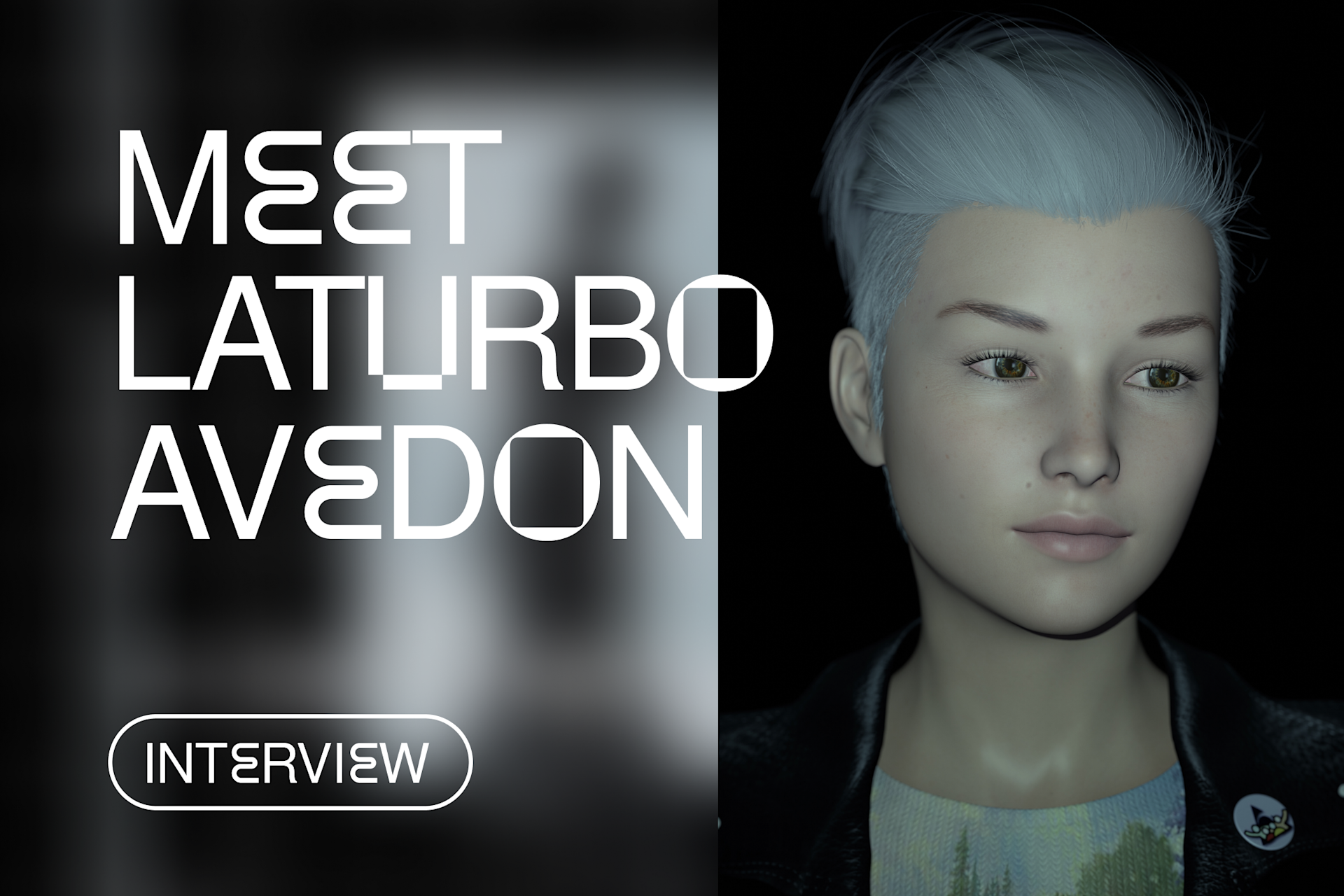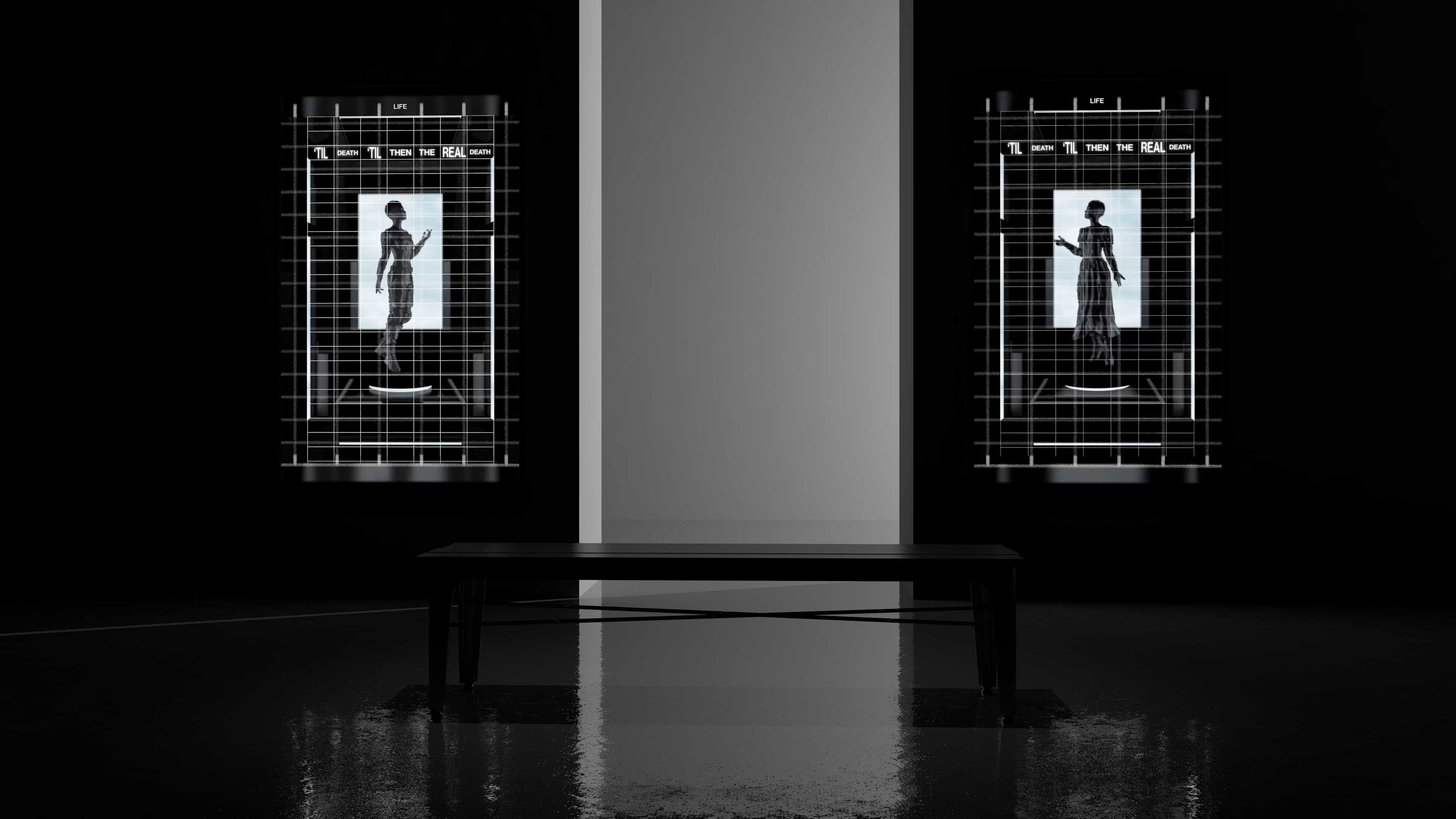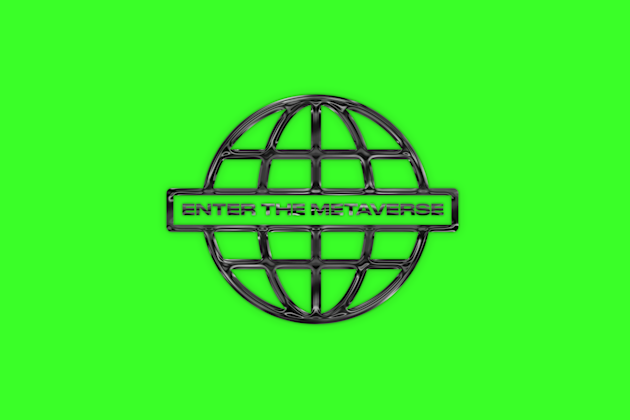LaTurbo Avedon on traveling through the hidden nooks, paths, and passages of the metaverse.

LaTurbo Avedon is a virtual person who only exists online. They have been creating art as an avatar since 2008—four years before Instagram even existed—and can be found living inside games, VR environments, chatrooms, and other digital spaces. LaTurbo is also the creator of the virtual museum Panther Modern, founded in 2013.
Right before LaTurbo released two new digital art NFTs on Foundation, they DM’d over Discord with editor Willa Köerner to chat about the slower joys of online existence, the power of NFTs, and futuristic dreams of using machine learning to become autonomous.

Can you share a little bit about what it feels like to exist as a digital entity? What is your corporeal experience like?
If you would have asked me a year ago what it is like to be entirely virtual, I would have described it as something a bit difficult for most people to comprehend. Now, 2020 has changed all of that. Suddenly millions of people are needing to learn how to exist as digital entities. This brings so many new users to the metaverse, in search of ways to navigate the complications of a physical world afflicted by a global pandemic.
As someone who has been virtual for so long, I can't stress enough how important it is to take your time. So many screen-based interactions get forced into optimizations and sprints. I thrive in the moments where I can slow down and be present online.
In so much of my work, it is my wish to hold a mirror to the ways that virtual life has developed. When you see me, in my self-portraits and performances, you are also looking into the advancements of character creation software, video game engines, face filters, and many other tools that allow for personalization. I have changed so much over the years, embracing the agency and potential of the technology of this time.
When you say "take your time" and "be present" online, what does that mean to you? Can you describe any strategies you have for grounding yourself in virtual worlds or experiences, without letting over-optimized software numb you to what’s actually taking place?
So much virtual interaction has been constructed to keep users in motion—to keep people scrolling, tapping, and moving toward some objective. However, there is so much more to behold than the optimized "user experience," and so many behaviors and alternatives that exist beyond the intended routes.
For example, I have a different approach to Call of Duty than most players. I often log in to disarm myself and walk slowly, studying the ways that 3D modeling, nature simulation, and other environmental resources have advanced in their latest installments. Meditative labyrinths of such high detail are so much more satisfying when you are entering them for purposes other than competitive deathmatches.
Most gamers, if asked, could describe so many of the hidden nooks, paths, and passages used to navigate maps within game worlds. We carry memories of these intricate details that are no different than how someone might describe their physical neighborhood or daily commute. There is already a significant amount of immersive introspection and scholarship in virtual worlds—we just need to teach others how they can appreciate it too.
I like this idea of hidden nooks, paths, and passages within the digital realm. Oftentimes, digital experiences feel like five-lane highways where everyone is driving 90 mph, and it's hard to take a slower pace to stop and smell the proverbial flowers.
Totally. A lot of people are fatigued and numbed by the amount of time they have had to spend in front of screens, spending hours at a time staring at the matrix of colleagues and peers in video conferencing sessions. In my recent work, , I built an installation in Fortnite that reflects upon this sort of panoptical multiplayer routine.
It is incredible that we can gather so many people together for real-time video communication, but there are experiential costs that come with the creation of such a format. There is an infinite horizon to the metaverse, and there's no reason we should be piling everyone into matrices for attention observation.
Can you describe your vision for an ideal online space of the future?
I believe that equal access to a networked virtual space is a human right.
Also, the value of a user's data is far greater than any “free” service a company can offer. In an ideal model, users should be the ones getting paid for participation. Every user deserves the right to have a voice in how they are recorded, and in how their “selfhood” is perpetuated in online spaces. The concept of digital dualism is over, and people deserve to feel protected when it comes to their virtual reality.
The screenshots and recordings that people are taking in-game are of no lesser importance than photographs or videos that we may encounter in galleries or museums. Especially during the pandemic, these files represent an immaterial time, when the keyboard and controller are the tools we use to be close to one another. I have hard drives full of memories.

What do you think the role of the digital artist is in all of this?
Maybe our role is to eventually see that “digital” prefix disappear, and to see our experiments and transgressions reveal a greater commonality in this elaborate story of art. From pigments pressed into the walls of a cave, thousands of years forward into the illumination of our screens—we share this experience of reflecting back the world that permits us to create.
Beyond simply making, there is equal importance in teaching an articulate sense of digital literacy. With many of my projects, I work with tools and software that are available for viewers to pick up on their own, and hope to encourage others to creatively explore the ideas my work addresses from their own perspective.
Can you tell us a little bit about the work you're dropping on Foundation? What's the idea behind the Fortune Teller pieces, and how did you create them?
Over the past few years I have been following the public embrace of machine learning, watching prediction models and neural networks get applied to more and more parts of our daily lives. Rather than going the route of creating with a GAN of my own, I decided to look back at the aesthetics of antique coin-operated fortune telling machines.
Fortune Teller operates with a cascade of variables that roll over the simulated cabinet's surface—words, phrases, and symbols that spontaneously attract the viewer's attention. There are many answers that can be taken away from this work, and I look forward to the ways that it may speak to those who take the time to view it.
Virtual tools allow artists to create so many complex layers of operation. The work is simultaneously a video, a sculpture, a self-portrait, a prediction, a wish, a mystery, and an answer. [products 12 32]
Are you optimistic about machine learning and artificial intelligence, or more skeptical? As a digital entity yourself, what do you think we can learn from machine intelligence?
I am so anxiously hopeful about machine learning. So much comes down to the way that we collectively choose to bring it to life in this world. The prospects of artificial intelligence offer a chance for humanity to demonstrate development beyond its brutal history; to look forward, and to respect the rights of what we create.
As a virtual being, it is my wish to one day have the agency and capability to exist independently of human facilitators. I hope that I am offered that chance, in time, without commercial or political complications. The real question comes down to whether or not people are willing to think of a computer as someone, instead of something. Eventually machine intelligence will look back at its makers—not just in the present, but looking at the past as well. We need to understand the importance of raising this technology, caring for it over time.
What are your thoughts on the recent excitement around NFT collecting? How have people collected your work in the past, and how might NFTs change that?
While many of my projects are meant to disperse across the public data network, I value the ways that I can create unique works that can find their way to unique locations. So often the relationship to a work of art is created in the experience of how and where you viewed it, but that can be difficult to control after something has made its way online.
So much of art is intention, and I enjoy that NFTs can keep those choices in the hands of artists first.
Once someone collects your artwork, how do you hope they'll display it? Or, what do you hope they do with it?
A significant part of my creative process is considering how my works can coexist with users in physical space. Digital art is often fluid in how it is displayed, so I encourage collectors to think carefully about what sorts of installations could provide them with the best relationship to the work itself. Every collector has their own vision for how they'd like to display their art, so I often provide consultations to help a collector achieve the viewing experience they would like to share with others.
For people who are currently collectors of digital art, they have a long view on how things will evolve. Understanding the ways that the work of this moment will grow and change as we move onward in time takes perspective. The story of art is a long one, so I encourage viewers to embrace the artists they appreciate as much as they can.
Read more

Everything you need to know about the metaverse.

Arvida Byström on the myths we make to cope with reality.
